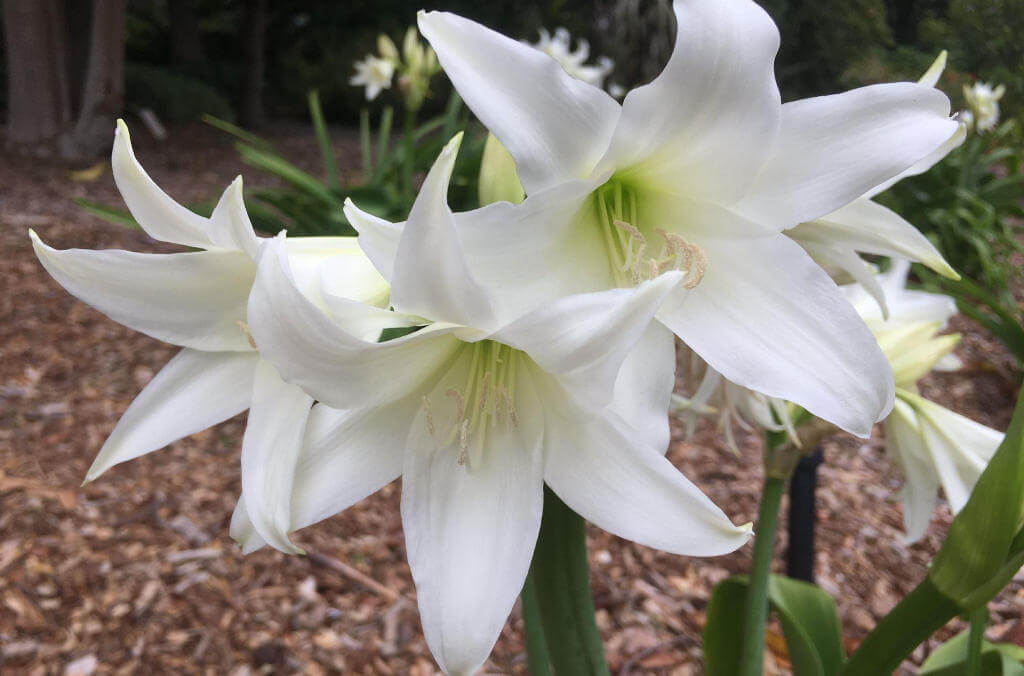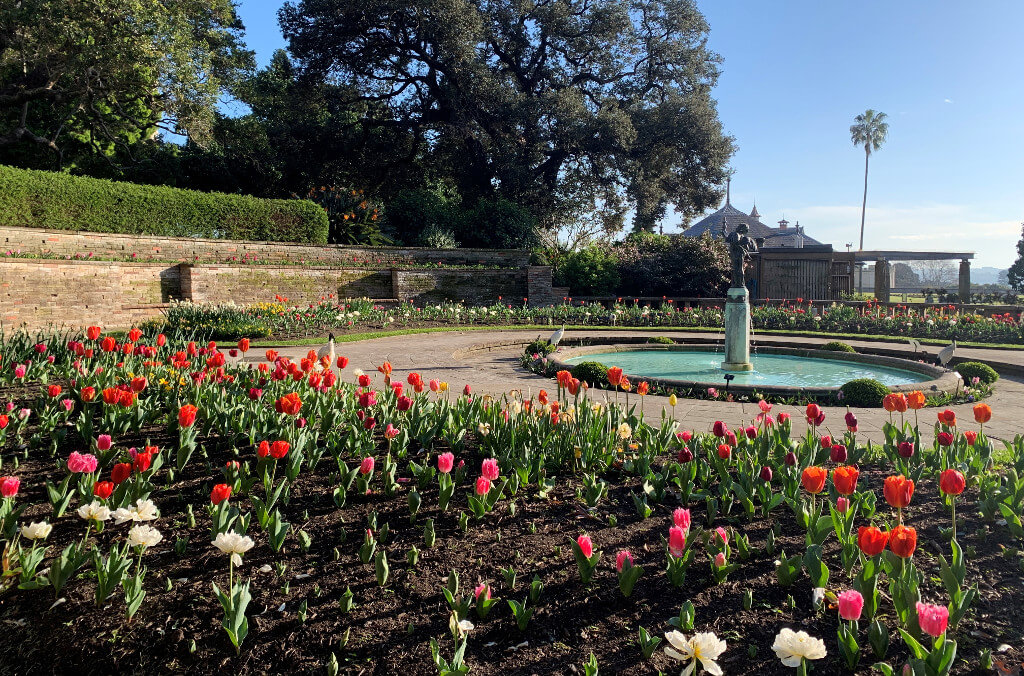Enjoy this month's Springtime Garden Magic
Spring has arrived and you will find flowers from the four corners of the world in our Garden.
Spring has arrived and you will find flowers from the four corners of the world in our Garden.
Rhodanthe chlorocephala subsp. rosea
This everlasting daisy or paper daisy is native to semi-arid south of western Australia where it grows on sandy soils. The papery, terminal flower heads range in colour from white to crimson with a yellow or black centre and are a magnet for pollinating bees. Flowers open fully in sunshine and close when overcast, in wet conditions and at night. The fruit are dry and fluffy with fine hairs called pappus attached to the seed aiding in wind dispersal. Family: Asteraceae
Wisteria varieties
Wisteria is a genus containing four species of deciduous woody vines native to Asia and North America. The Chinese (W. sinensis) and Japanese (W. floribunda) species are the most popular for their large drooping racemes of fragrant purple to white flowers. They climb by twining around a tree or support. The Japanese species twines clockwise while the Chinese and American species (W. frutescens) twine anti-clockwise. Family: Fabaceae
Sydney Rock Orchid – Dendrobium speciosum
First described in 1804 from a specimen collected in Port Jackson, the Sydney Rock Orchid is found along the east coast of Australia from Victoria to Cairns. It is a highly variable species and grows as a lithophyte (on rocks) or epiphyte (on trees). It has spreading roots and cylindrical pseudobulbs, swollen structures below the leaves. Flowers, usually white or creamy yellow, occur in clusters on long stems. Each stem can carry over a hundred fragrant flowers, making them spectacular when in full bloom. Family: Orchidaceae
Crinum x powellii 'Album'
Crinums are native to tropical, subtropical and warm temperate regions of Africa, Asia, Australia and the Americas. They are bulbous plants which produce large strappy leaves and fragrant funnel-shaped flowers on stems held above the leaves. There are about 180 species in the genus but many more hybrids in colours from white to pink with many stripped varieties. The bulbs are tough and long lived and can grow very large. This cultivar produces large white flowers in spring and summer. Family: Amaryllidaceae

Rhododendron veitchianum
This rhododendron is native to the mountain forests of Myanmar, Thailand and Laos where it grows as a small shrub to about 2m or as an epiphyte (on trees). It has large trumpet-like white flowers that often have a yellow blotch in the throat and emit a pleasant gentle fragrance. It grows well in Sydney’s humid and warm climate and the leaves have scales on the under surface which makes the plant more resistant to sap sucking bugs such as lace bugs and thrips. Family: Ericaceae
Macadamia – Macadamia tetraphylla
The Macadamia genus consists of four species, all endemic to Australia and all are threatened in the wild. Only two species, Macadamia tetraphylla and Macadamia integrifolia produce edible nuts and both have been used to produce cultivars for commercial production. In spring, Macadamia tetraphylla trees are covered in small pink flowers that are held in long racemes producing a waterfall of colour and fragrance. Family: Proteaceae
Tree Waratah - Alloxylon flammeum
The Tree Waratah is one of four species in the Alloxylon genus, three of which are endemic to Australia and one is from Papua New Guinea. This species from the Atherton Tablelands in northern Queensland grows in tropical rainforest, reaching over 30m in height. They are known for their spectacular bright red to orange flowers that resemble the flowers of the floral emblem of New South Wales, the Waratah. The fruit are woody rectangular seeds pods that contain 8 to 10 winged seeds, spread by wind. Family: Proteaceae
Pioneer Memorial Garden
This Spring our Pioneer Memorial Garden in the Palace precinct is a riot of colour. Tulips, Hyacinths and Anemones are the spring heroes in this circular garden originally built in 1938. The Garden occupies the footprint of an enormous dome at the centre of the Garden Palace building, built for the Sydney International exhibition of 1879, that burnt down only a few years later in 1882. The memory of this building gives this part of the garden its name and the Pioneer Memorial Garden its shape.

See the Garden this month
Our guided walks are the perfect way to experience the very best of the Garden.